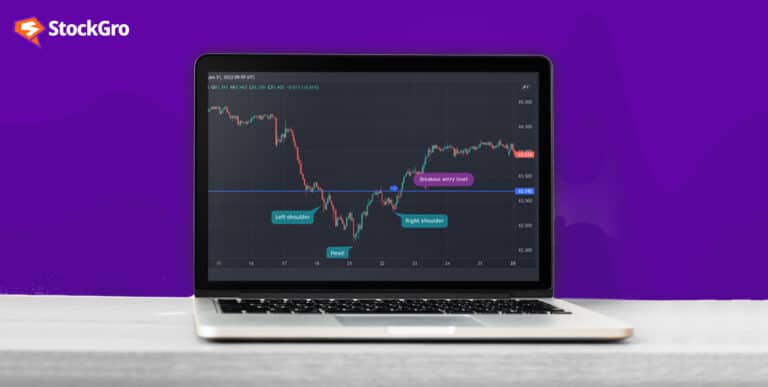
Trading in the stock market is exciting, rewarding, demanding, and stressful. While long-term investors may find it relatively easy, the traders who take positions often have to be very focused and keep a regular check on the stock market.
In order to help traders manage their profiles better, the market offers various types of orders where traders can minimise their risks and losses.
One such order is GTT. In the share market, GTT stands for Good Till Triggered.
Understanding the concept of GTT and other order types is essential in turning the market conditions in your favour.
GTT in share market
GTT meaning in simple words is that it is an order that stays active until it is triggered, for execution.
Generally, when a trader places an order in the market, it must get executed on the same day. Otherwise, when the market closes for the day, the non-executed order expires. The trader places a fresh order the next day.
In the case of GTT, the trader sets price limits for an order with a broker or a stock broking firm. Once the market price matches the trader’s price limit, the order is placed and executed.
GTT order is unsuitable for intraday trading, as it may take a while until the market prices match the trader’s price limits. Hence, most of the stock broking firms in India offer one-year validity for these orders to stay active.
The order gets executed if the market prices meet the trader’s target price within the said time frame. Otherwise, it expires and gets cancelled.
You may also like: Immediate or Cancel (IOC) orders: A trader’s guide from concept to execution
Price components involved in GTT
Before getting into the price component, it is necessary to understand the difference between placing an order and executing it.
Placing an order means putting out the buying or selling order in the market for interested parties to trade.
Once an opposite party who wants to buy or sell the same share agrees on the price and quantity, the trade is fulfilled. Fulfilment of the trade is called execution.
The two most essential prices needed for a good till triggered order are:
- Trigger Price – The price limit set by the trader at which the broker places the order in the stock market.
- Target Price – GTT share price limit set by the trader at which the trade has to be executed.
The relevance of GTT to investors
The market offers various kinds of orders for traders to leverage. These orders have unique features that help traders get through the strain of trading in the stock market.
- Missing entry and exit opportunities – Traders take long and short positions at specific price points to ensure maximum rewards. To place orders and execute them at the exact price points is difficult as it requires extensive monitoring. Traders, more often than not, miss the entry and exit opportunities.
- Determining stop loss and target prices – Traders hold multiple stocks. Analysing stop loss and target price for each stock is strenuous and can take long hours.
- Time-consuming and busy schedules – Traders with other commitments like a full-time corporate job, may not allocate the required time and effort to go through the markets every day.
To avoid such problems, GTT is a relevant and valuable option for traders.
Also Read: What is Short-Selling, and how does it work?
Various types of orders in the stock market
- Market order – One of the most common and basic types is the market order. An order to buy or sell at the prevailing market price is called the market order.
- Limit order – This is where buyers and sellers set their price limits for a future order. The other party waits till the market price reaches the set limit and enters a trade. These orders are fulfilled on a future date at a predetermined price, hence they are also called pending orders.
If the market price doesn’t meet the limit, the order stands cancelled.
- Stop loss order – An order type in share market where a price limit is determined, and the order remains inactive until the market price reaches there. Once the market reaches the stop loss point, the stock is bought or sold at the best price.
- Stop limit order – A combination of the limit order and stop loss order sets two prices – the stop loss price and the limit price. Traders wait until the price reaches the stop loss price and then execute the trade when it meets the limit price.
- All or none – This is an order type where the trader has to either trade for the entire quantity requested or there is no trade.
- Immediate or cancel – This is where an order has to get executed immediately, otherwise, it gets cancelled. If the traders fulfil an order partially, the rest of the order gets cancelled.
- Good till cancelled (GTC) – Orders that remain active until the trader cancels it or executes it. Brokers generally set a time frame until when traders can cancel trades.
- Good till day (GTD) – Orders remain active until a date specified by the trader. Non-executed trades are automatically cancelled after this date.
Example
XYZ Ltd is currently traded at ₹200 in the market. Trader A wants to buy these shares at ₹180 and sets a trigger price of ₹185 with the broker. The broker waits for the market price of XYZ to reduce. When it reaches ₹185, the broker places an order on the stock exchange. On the other hand, trader B speculates the price of XYZ to go down further and decides to sell shares at ₹180 to stop further losses. So, when the market price hits ₹180, trader B places a sell order. This order matches the target price of trader A, and the order gets executed.
Also Read: What is LTP in share market & how it is calculated?
Summing up
As discussed in the above example, trader A decides the trigger and target price while the broker takes care of the next steps in the trade.
It saves time for the trader and ensures no opportunity to make profits is lost.
GTT order is popular today, and various stock broking firms offer this service to their traders.
While they all come with slight variations in the types of products eligible, time period and other features, the prime aspect of GTT – to keep an order active until it reaches the desired price, remains the same across all brokers.

